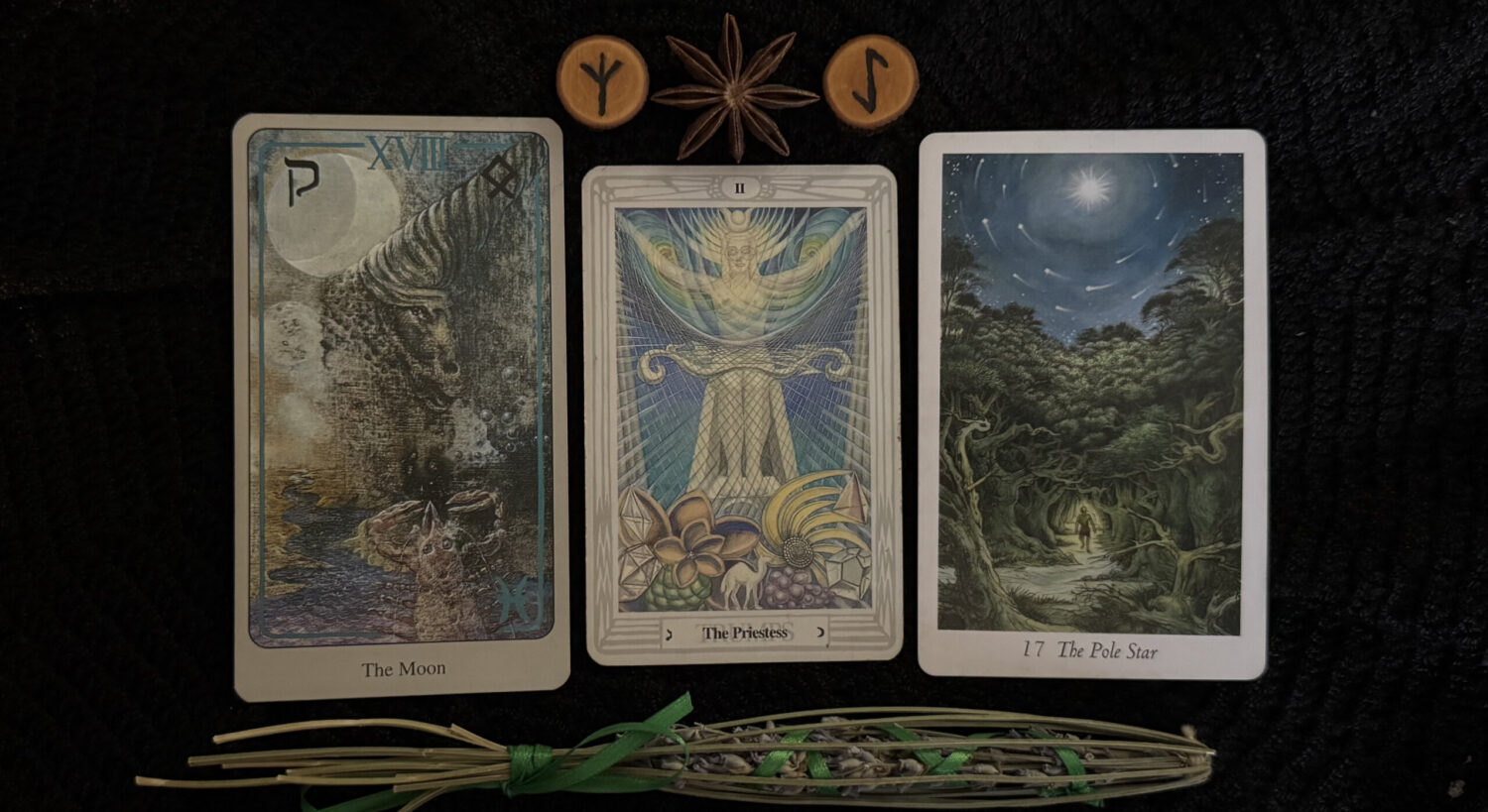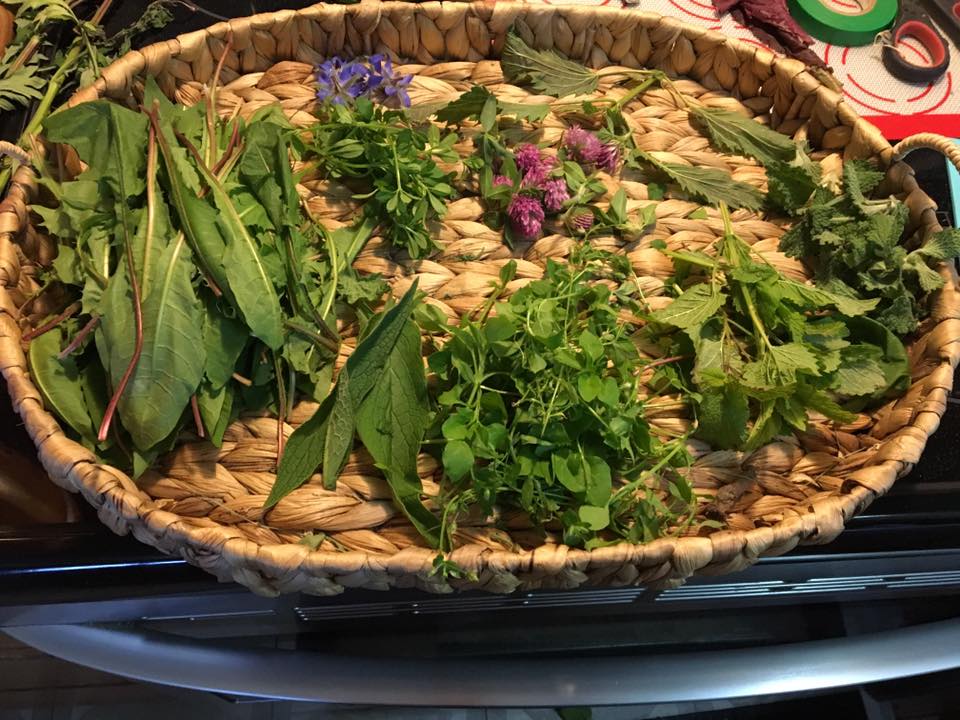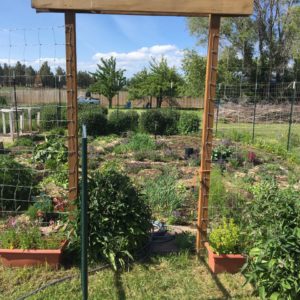There’s nothing like wandering about, gathering herbs to use for tea. I live on five acres, three of it pasture. I never know what I’ll find growing out there, but mostly that’s where the red clover grows. I commandeered my vegetable garden and turned it into a large medicinal garden. Raised beds comprising the shape of a pentagram have everything from mugwort to milky oats growing in them. I’ve had to replant my skullcap a couple of times as well as my wood betony, but it could have simply been too cold when I planted them. Echinacea, elecampane, and yarrow surround the outside, with lemon balm, astragalus, St. John’s Wort, motherwort, burdock, and valerian planted about, observing their elemental correspondences for placement.
I also hugeled the beds somewhat before defining their shape to help with moisture retention. The High Desert is dry and volcanic. With hugel beds, logs and sticks line the bottom of the bed, soaking up water and providing moisture to the root system of the plants during dry conditions. It’s a nice option for gardening in our area, because at 3000 feet above sea level, gardening in Central Oregon can be a challenge.
For this morning’s tea I gathered comfrey leaf, borage flowers, mugwort, and some lemon balm from the herb garden. From the yard I gathered dandelion leaf, chickweed, cleavers, nettle, and horehound. Once you plant horehound and comfrey, you have it forever, particularly if you run a rototiller through it thinking you’ll get rid of it.
Yes, I did that.
But the great thing about comfrey is that it makes really good green manure to use in the garden as mulch. That’s assuming you can get close enough to cut any. Bumblebees, along with my own bees, really love comfrey. A bumble actually followed my husband over to the new area where he was moving some comfrey plants. He hovered around crawling all over the comfrey plants even though no blooms were present yet. My patch is so big now, and with four hives, it’s probably going to be best to don our bee suits before harvesting the comfrey this year.
So let’s take a look at what I gathered, along with information from the materia medica section of my new book, Grimoire of a Crone.
Dandelion – taraxacum officinale – “contains vitamins and minerals including Vitamins A, C, E, and K, and calcium, iron, magnesium, and potassium. It also contains glycosides, terpenes, flavonoids, and is bitter.” “It’s diuretic, laxative, antirheumatic, and tonic; you name it, it does it. It increases bile, and reduces fluid retention and fever.”
Borage – borago officinalis – “the dried leaves contain essential oils, mucilage, tannins and saponins. Borage reduces fever, purifies the blood, helps itchy skin conditions, nervousness, acts as an expectorant, anti-inflammatory, tonic, galactogogue, and diaphoretic. Borage is useful as an eyewash, for adrenal stress, respiratory infections, and as a source of calcium and potassium.”
Chickweed – stellaria media – “contain bitter constituents and saponins. Chickweed is used externally for skin conditions as a poultice. Internally, chickweed is used to control weight, for respiratory conditions including fever, as a blood purifier, and for inflammation.”
Cleavers – galium aparine – are “bitter and the constituents include glycosides, alkaloids, and flavonoids.” “Cleavers are diuretic and are useful for fluid retention and inflammation.”
Comfrey – symphytum officinale – “Comfrey acts as a demulcent, vulnerary, expectorant, and astringent. It’s used for respiratory and gastric complaints, to regulate blood sugar, and to heal wounds and breaks.”
Horehound – marubium vulgare – “horehound is used for cough and other respiratory ailments.”
Lemon Balm – melissa officinalis – “treats respiratory ailments and digestive complaints.” and “with its nervine properties, alleviates headaches and nervous tension.”
Mugwort – artemisia vulgaris – “Mugwort acts as an emmenagogue and narcotic bringing on menses and treating nervousness.”
Nettle – urtica diotica – “aids respiratory conditions including asthma and hay fever. Nettle is a diuretic, expectorant, and tonic and controls inflammation and fluid retention associated with rheumatic conditions.
Red Clover – trifolium pretense – “acts as an alterative, anti-spasmodic, expectorant, and anti-inflammatory.” I use it for menopause symptoms.
These herbs are not only helpful for menopause symptoms but they also help keep my rheumatoid arthritis in check. Fluid retention seems to go hand in hand with inflammation and was a problem when my RA was active. So I look for herbs that are diuretic or respiratory in nature as well as liver alterative herbs to keep my system balanced. Other herbs such as comfrey leaf nourish and heal the body and I like to include it in my teas and tinctures.
So I love the wandering about of it, gathering all of these herbs for my tea. It’s a meditative experience in appreciation of all the land has to offer. It’s a blessing like no other.
And when all is said and done, relaxing with a cup of herbal tea is the best part of all.
~Blessings!
References
Erickson, Jan. (2016) Grimoire of a Crone. Kindle Publishing.
If anyone intends to either quote something I've written, or intends to post any part of my work, including my videos, on any other site, please ask permission before doing so. Any reposting of my work without permission can be considered as copyright infringement, so please ask. And if I give permission, you MUST clearly reference my name as author and my website. No exceptions. The words an author writes are sacred. Unapproved use is not.
Thank you... Jan Erickson


